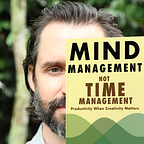The Micro-Skills of Golf
To make golf practice deliberate, you have to isolate individual skills. Then you can work on one skill at a time. You can focus any measurements you make of progress around that one skill you’re trying to isolate.
Many people who “practice” golf go to the range or get on the putting green and just start hitting balls or putting. Yes, you can see if you hit your target or make your putt, but there are too many factors at play to do focused adjustments.
Ideally, you will work on each skill in isolation. There are some skills you should avoid working on at all until you’ve mastered other skills.
Here is a likely-incomplete inventory of micro-skills to be isolated in golf, sometimes with thoughts about the proper way to practice said skill:
General / “Meta” micro skills
Muscle memory: This is the act of merely repeating the same motion over and over again, to program it into your “muscle memory.”
Shot routine: The act of following a repeatable routine for executing a shot. Things like taking aim, setting up, and rehearsal.
Mental cues: Finding, practicing, and executing mental cues that result in a desired effect for a shot. Something like “fan your club face outward on the backswing.” Mental cues don’t always track to what you’re actually doing in the shot. Sometimes they help compensate for a quirk. You can experiment with different mental cues, and mix and match them to make adjustments. I’m lately experimenting to trying to use only one mental cue per swing on the driving range.
Long game
Ball striking: How solid of contact can you make?
Aim: Can you get the ball to land in the direction of the target, regardless of distance?
Distance control: Can you pick the right club for the shot and conditions to hit it the right distance? Can you adjust your swing to make fine distance changes?
Shot shape: Can you shape the flight path of the ball? Cuts (“slices”), fades (“hooks”), knockdown shots, the opposite of a knockdown shot (forget what this is called). This is advanced and one shouldn’t waste too much time on this until they’ve reached a certain level.
Swing muscle memory: Programming the right swing into your muscle memory. This may call for little rest between swigs. Don’t program a bad swing into your muscles, and don’t fatigue yourself and cause yourself to get sloppy.
Swing stamina: People who don’t golf are surprised to learn that hitting lots of balls can take a lot out of you. When you don’t have stamina built up, you have to be careful not to overdo it. If you swing while fatigued, you can get sloppy, and program the wrong swing into your muscles.
Short game
Tempo: Having the right tempo on a chip or pitch swing. Chips and pitches should have a forward and backswing of the same length.
Landing: Hitting the right “landing area” on a chip or pitch.
Pitch distance control: Finer distance control than on the long game. This is controlling distance on a pitch shot.
Putting
Putting tempo: Having the right tempo on a putt. Your putting stroke should have a forward and backswing of the same length, with the putter traveling at the same speed both forward and backward (like a pendulum). I like about 80 beats per minute.
Putting distance control: Hitting long putts at the right distance. Practice this while putting at a tee, or to the fringe of the green. Isolate distance from aim.
Putting aim: I practice this with a string stretched between two pencils, under which I putt. Or maybe that’s more of a muscle-memory thing? Things get muddy here. In any case, I am trying to putt the ball along the line produced by the string. This is foolproof on short putts as long as you can repeat the same stroke over and over.
Reading the break: How well can you set up and read a break on an unfamiliar putt? This is challenging to isolate, because you have to know that you also aimed well according to the target you chose based upon your read. I suppose you could use the “string” apparatus for each putt, but that would extremely cumbersome.
Hazard shots
Short sand shots: Successfully getting out of sand traps surrounding the green. Micro-skills within this one for various types of sand, degrees of dampness and fluffiness, and the lie of the ball.
Long sand shots: Hitting long shots from the sand. Micro-skills within this for types and conditions of sand, as well as lie.
Uneven lies: Sidehill lies, uphill and downhill lies.
Bad lies: In a divot, ball sitting down, various types of rough. Countless possibilities.
Misc. trouble shots: Close to obstacles, hitting under tree limbs. Countless possibilities again. All too common. Better to avoid being in these situations, but that’s impossible.
Course management
General: Course management, or “playing the percentages” is highly underrated. There are more micro-skills within this, but I haven’t given them enough thought yet. Have the restraint to not swing for the pin or to avoid hitting driver when there’s a high likelihood it will get you into trouble. Know how to manage risk according to your abilities. In a perfect world, you could know your chances of various outcomes for every shot, but that would be daunting and annoying as hell to other players to collect that much data.
There are countless micro-skills you can practice. Ideally, you can focus your limited deliberate practice time on the ones that will have the most impact. Skills one needs to work on will shift as skill level increases.
